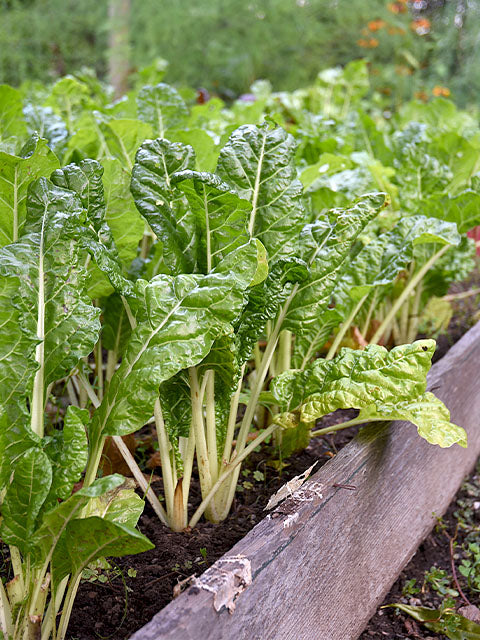The Underground Goodness
Vegetables are hungry plants. To pump out the crops that feed you, your garden needs plenty of nutrition. Often, a crop of veggies will deplete the goodness in the soil, especially when constant rain is also flushing the land. For a boost, you might want to add some Wiscasset Blend Earthworm Castings or sprinkle on some Schoodic Blend Organic Composted Manure Blend to give your soil some fresh oomph in between crops. Now is not the time for your garden to flag—give it the strength to carry on strong.

Encouraging More of a Good Thing
When you plant seeds of broccoli, consider looking for varieties that follow the main crop with side shoots. They pump out smaller but equally yummy shoots after the main crown is harvested. Keep checking for cabbage moth caterpillars and harvest the main crop crowns as they develop to coax more side growth to develop.

You can also encourage green beans to swing into a second crop by keeping the initial harvest picked. If beans are left on the plant, they send their energy into ripening seeds. But if you harvest, the plant might just be tricked into making another flush of flowers…followed by beans. ‘Jade’ bush beans are a great variety for producing a second crop. And the same theory holds for peppers, tomatoes, zucchini and many other crops. Harvesting quickly and fully results in more bonus food for every square foot.
Replanting Rows

Keep on top of your veg garden. Lettuce tends to bolt into producing flowers while the leaves become bitter in hot weather, so harvest your crops hastily. Spinach and arugula have probably already bolted in the heat. Use that space for radicchio, perpetual spinach, and other crops that tolerate hot weather. Plant more beans for later in the season. Late season carrots are super sweet, so get more rows of carrots in the ground. Beets can tolerate autumn temperatures, so sow some more. Zucchini and summer squash need to be harvested to produce more flowers, but they will eventually become exhausted. To keep that crop coming, plan your space so that a generous chunk of soil is available midseason for planting a second crop of squash. And cauliflower prefers weather that’s cool, so get that crop in the ground to fill the footprint of veggies that have been harvested and are now just a memory in your tummy. Vegetable gardening without pause is all about planning ahead.
Add a Little Spice

Whatever you do, don’t forget the basil. most herbs will develop sideshoots if you keep harvesting their tips. it’s all about preventing the plant from swinging into flower production. if you use a lot of basil (and who doesn’t rely on basil to put the zing in zucchini?), consider planting a second crop to keep the yum coming reliably until frost. the same is true for summer savory. perennial herbs such as sage, winter savory, and thyme also send out fresh tender growth when you encourage branching by harvesting often. parsley is a biennial, so you might need to plant a second crop if the heat has pushed your plants into flowering.
Planning for perpetual harvest throughout summer can be so much fun, but what is even more gratifying is the fulfilling food that you put on the table. nothing tastes better than a meal you’ve grown yourself. Keep it coming!
Written by award winning author, Tovah Martin. Photos also taken by Tovah Martin. find her books and more information on her website: tovahmartin.com.













